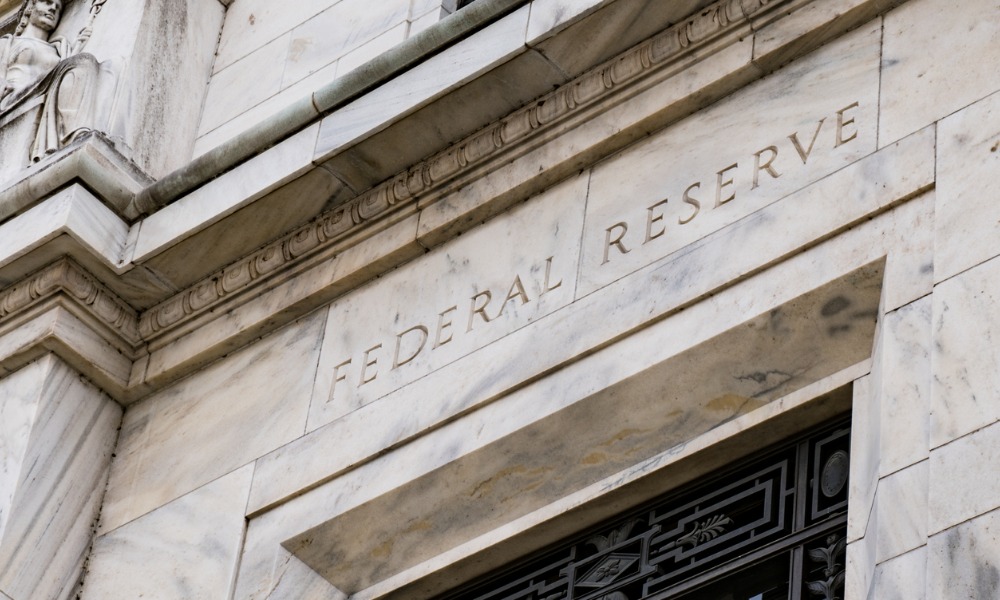

by Reade Pickert and Heesu Lee
Federal Reserve Governor Christopher Waller said he continues to see a path to interest-rate cuts later this year amid his expectations that tariffs will boost unemployment and temporarily increase inflation.
Waller said tariffs will raise inflation in the “coming months,” but he supports looking through any near-term rise in price growth when setting policy as long as inflation expectations remain anchored.
“Assuming that the effective tariff rate settles close to my lower tariff scenario, that underlying inflation continues to make progress to our 2% goal, and that the labor market remains solid, I would be supporting ‘good news’ rate cuts later this year,” Waller said in remarks prepared for a Bank of Korea conference in Seoul on Monday.
Waller referenced a speech he gave in mid-April, in which he outlined two scenarios for how trade policy may unfold.
His “large-tariff” scenario assumed an average trade-weighted tariff on goods of 25% that remained in place for “some time.” The “smaller-tariff” scenario assumed a 10% average tariff, and that higher country and sector-specific duties would be negotiated lower over time.
In both scenarios, Waller expects the impact of tariffs on inflation would be temporary. He also anticipates the levies will cause an increase in the unemployment rate that will “probably linger.” That said, job cuts would likely be “modest,” he said, under the smaller-tariff option.
“Reported progress on trade negotiations since that speech leaves my base case somewhere in between these two scenarios,” Waller said. He now estimates a 15% trade-weighted tariff on goods imports.
During Waller’s dialogue with Bank of Korea Governor Rhee Chang-yong, he attributed recent increases in long-term treasury yields to rising concerns over the US fiscal deficit. He said markets had expected some progress toward fiscal consolidation, but estimates now suggest the federal deficit will remain near $2 trillion — about 6% of gross domestic product — for the foreseeable future.
“If there’s going to be a lot more debt issuance than the markets thought, they’ll buy it — but at a much lower price, unfortunately,” he told Rhee. “It’s not a question of whether it will sell, but the price they’re willing to pay.”
He added that recent trade and geopolitical developments, including tariff announcements and signals from the White House, have fueled risk aversion among foreign investors. Some institutional buyers are reassessing their exposure to US assets, which could weigh on demand and push yields higher.
Waller largely dismissed a 2025 surge in the University of Michigan’s gauge of consumers’ inflation expectations over the next five to 10 years. He said he prefers to look at market-based measures of inflation compensation and professional forecasters’ expectations, which have not seen a similar increase.
Waller said the “strong” labor market and recent progress toward the Fed’s 2% inflation goal offer policymakers time to see how trade negotiations unfold, echoing many of his colleagues.
Fed officials have largely indicated rates are in a good place while they await further clarity on President Donald Trump’s policies — particularly tariffs — and their impact on the economy before adjusting borrowing costs.
Waller underscored that considerable uncertainty remains around the ultimate level of duties imposed on other countries and sectors. Trump announced Friday that he would be increasing tariffs on steel and aluminum to 50%, from 25%.
“As of today, I see downside risks to economic activity and employment and upside risks to inflation in the second half of 2025, but how these risks evolve is strongly tied to how trade policy evolves,” Waller said.
Waller also weighed in on stablecoins, describing them as a potential tool to introduce competition into payments system.
While noting he couldn’t speak for the US government’s stance on legislation, Waller said he views stablecoins as “just a payment instrument,” one that could be issued by non-bank entities in the same way deposits are used for transactions.
“If stablecoins can help drive down costs, especially for small and medium-sized firms doing cross-border transfers, I’m all for allowing competition rather than having regulators set prices,” Waller said.
Copyright Bloomberg News

Rajesh Markan earlier this year pleaded guilty to one count of criminal fraud related to his sale of fake investments to 10 clients totaling $2.9 million.

From building trust to steering through emotions and responding to client challenges, new advisors need human skills to shape the future of the advice industry.

"The outcome is correct, but it's disappointing that FINRA had ample opportunity to investigate the merits of clients' allegations in these claims, including the testimony in the three investor arbitrations with hearings," Jeff Erez, a plaintiff's attorney representing a large portion of the Stifel clients, said.

Chair also praised the passage of stablecoin legislation this week.

Maridea Wealth Management's deal in Chicago, Illinois is its first after securing a strategic investment in April.
Orion's Tom Wilson on delivering coordinated, high-touch service in a world where returns alone no longer set you apart.
Barely a decade old, registered index-linked annuities have quickly surged in popularity, thanks to their unique blend of protection and growth potential—an appealing option for investors looking to chart a steadier course through today's choppy market waters, says Myles Lambert, Brighthouse Financial.
